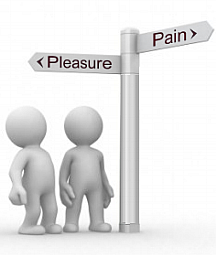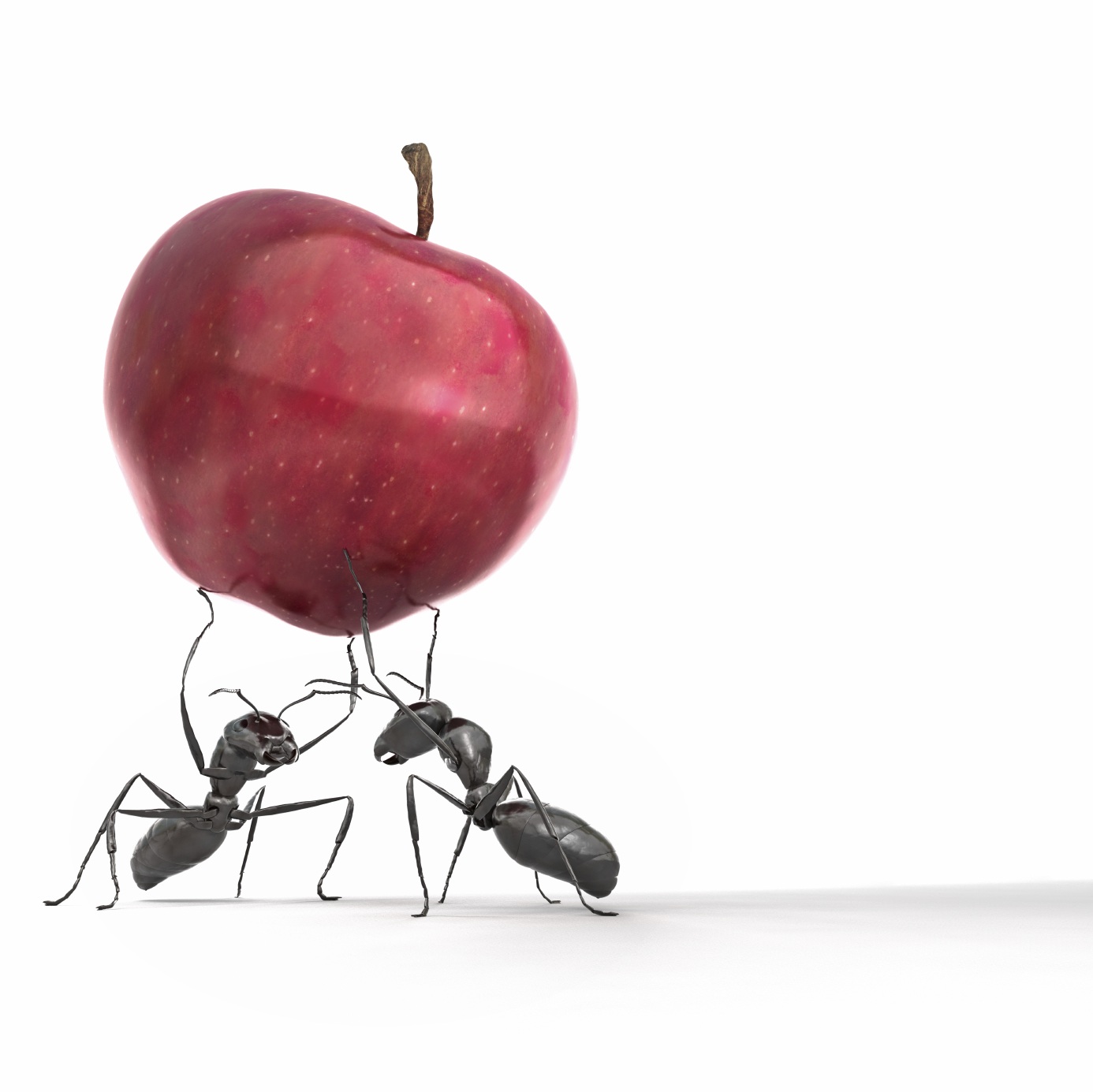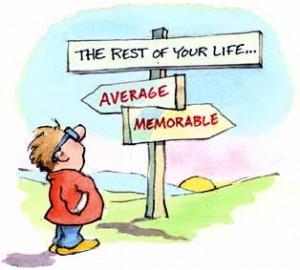Exploring the Pain and Pleasure Principle
The pain-pleasure principle lies at the core of everything you do, and of everything you are. Your beliefs, values and psychological rules are all built upon this principle. The decisions you make, the actions you take, and the habits you indulge in, are all based upon this principle. In fact, every part of your psyche is influenced in some way by the pain-pleasure principle. You are therefore who you are today because of how you have interpreted and acted-upon the experience of pain and pleasure in your life. And as we all know action always begins with a decision.
Before every decision you make, you unconsciously ask yourself the following set of questions:
What does this mean?
Will it lead to pain or pleasure?
What should I do about it?
The decision you choose to make will depend on how you interpret pain and pleasure in your life. And how you interpret pain and pleasure depends on your past experience of pain and pleasure.
Digging into Your Past
Over the years you have had a variety of personal experiences that have touched your life. Some of these experiences have been painful and have consequently led to the emotions of anger, hurt, stress, anxiety, overwhelm, frustration, depression, etc. Other experiences have been pleasurable and have consequently led to the emotions of happiness, joy, enthusiasm, curiosity, love, gratitude, excitement, etc.
All of the emotional experiences you have had are neither good nor bad; they are neither hurtful nor helpful. They are what they are as a result of how you interpreted these experiences at the time. Therefore your experiences of pain and pleasure are nothing more than personal interpretations based on your perspectives at the time.
Because your experiences are based on the interpretations you have made, it’s therefore safe to say that different people will have different interpretations of the same experience. As such, what you interpret as a painful experience, another person might interpret as a pleasurable experience. In other words, you might experience a situation that makes you feel angry, which leads to pain. At the same time, another person will have the same experience, however instead of feeling angry, they choose to feel curious. Both of you had the same experience, however your interpretations of that experience was different, and you therefore experience a very different emotion.
How you — or any other person — interpret each experience is based on the underlying parts of your psyche. These parts include your beliefs, values, self-concept, psychological rules, meta-programs, human needs, etc. All these parts of your psyche have been shaped over a lifetime as a result of the experiences/references you have collected over time.
The references you have collected come through your five senses. You have therefore interpreted your world through the use of your five sensory organs of sight, sound, touch, taste and smell. These sensory organs are the windows to the world around you. They allow you to experience both the pleasures and the pains that life has to offer.
Over the years you have learned to interpret things in a certain way through your five sensory organs via the experiences you have had. You have for instance learned what works and what doesn’t work; what hurts and what doesn’t hurt; what’s bad and what’s good; what’s right and what’s wrong through the process of trial and error. However, you don’t only learn these things through your own experience, you also learn through the experience of others — through observing other people and the world around you. This is especially relevant when you’re a child who looks up to others for guidance and direction. It’s during these times in particular that certain beliefs, habits and perspectives are set in stone and continue to factor into every decision you make for the rest of your life.
All of these experiences you have had come in the form of references. When similar references are collected about certain things, that is when opinions start to form. Then as more and more references are collected about something over time, that is when beliefs start to take shape. And as beliefs start taking shape, they begin to guide every decision you make and action you take. Furthermore, these beliefs influence your values, self-concept, meta-programs, psychological rules, and other parts of your psyche. Likewise, all of these “parts” shape your beliefs. Therefore your psyche isn’t a straight line, it is rather a circle, or in other words: All of these parts are part of a cycle where one part influences all other parts on a continuous basis throughout your life.
These references you collect come in the form of pain and pleasure experiences. Some of them will be taken from the real world, while others will be created in your imagination. It doesn’t really matter where they are taken from. All that matters is that the reference has been made and added into the mix of other references you have collected about related things.
Some of your references will of course be pleasurable and will bring forth positive and empowering emotions that make you feel good, while other references will be painful and will stir-up negative emotions that will feel absolutely awful. As a result of these emotional experiences, you subsequently learn more about what brings you pain and what brings you pleasure. And these are the factors that influence every decision you make throughout the day.
Influencing Every Decision You Make
It’s human nature to gravitate towards pleasure and to seek to avoid pain. In other words, you will make most of your decisions based on acquiring pleasure while at the same time trying to avoiding pain. This works well at times, however at other times it will actually work against the goals and objectives you are trying to achieve. But more about that shortly. Let’s first look at the decision-making process.
Every decision you make will lead to one or more of the following consequences:
- Short-term pain.
- Short-term pleasure.
- Long-term pain.
- Long-term pleasure.
In addition to this, there will be varying degrees of intensity of pain and pleasure ranging from low to high. The higher the intensity of pain or pleasure the more of an influence it will have on the decision you are about to make. On the other hand, the lower the intensity of the pain and pleasure the less of an impact it will have on your decision-making process.
You might for instance have a goal that you would like to achieve. However, in order to achieve this goal you will need to do something that makes you feel uncomfortable — something that leads to the experience of pain. You think about the decision for a moment and weigh up the consequences of taking and of not taking action. On the one hand you have this wonderful goal that will bring you a great deal of pleasure. However, in order to experience this pleasure you must achieve this goal, and achieving this goal will require doing something that will bring you a great deal of pain. You therefore have a dilemma on your hands. You want to experience the pleasure of having this goal in your life, but you don’t want to go through the pain of achieving this goal. What do you do?
In this particular instance let’s say that you decide to forgo your goal for the time being. You make this decision based on the intensity of the pain that you are likely to experience while pursuing this goal. You are simply not willing to go through the pain in order to attain your goal. Therefore, the pain of undertaking a specific task required to achieve this goal is far stronger than the pleasure you would experience by achieving your goal. As a result you fall into the procrastination trap and put off doing this task for another day. In other words, the experience of short-term pain (doing the task) was a far more influential factor in this decision than was the pursuit of long-term pleasure (achieving your goal).
In the same scenario there’s also a chance that you might fall into the instant gratification trap. This is where short-term pleasure has more influence on your decision-making process than long-term pleasure or short-term pain. In such instances you will choose to indulge in something pleasurable in the short-term in order to avoid short-term pain. Alternatively you might choose short-term pleasure because the experience of long-term pleasure just isn’t motivating enough to influence your decision-making process.
As an example, you might for instance be on a 30 day diet plan. However, after day 10 you just can’t resist the urge of the temptations hiding in your pantry, and you decide to indulge yourself by scoffing down a packet of chips. In this scenario you chose short-term pleasure because the pain of going through another 20 days of this diet was just too unbearable.
Remember that these decisions you’re making are nothing more than conditioned responses that have been learned over the course of your life and are now deeply ingrained into your psyche — manifesting in the form of your beliefs, values, psychological rules, etc. These are the parts of you that are influencing the daily choices and decisions you make, however these parts have been conditioned into your psyche as a result of how you have interpreted and responded to pain and pleasure in your life.
Your decisions are however not as straightforward as they might seem. It’s not just about short and long-term pleasure or pain. It’s more about the degrees of this pain and pleasure and how this factors into your decision-making process.
Let’s take a look at an example.
You might for instance want to achieve a desired weight-loss goal. Achieving this goal will bring you long-term pleasure because you will look better, feel better, and have more energy. However, getting to this point along your weight-loss journey will not be easy and you will need to go through a lot of short-term pain. However, if the long-term pleasure provides you with enough motivation, then you will likely get through those difficult moments of short-term pain. But your journey is never smooth, and short-term temptations in the form of sweets and chocolates constantly pop up. These temptations bring you short-term pleasure, and as a result you now have a dilemma. It’s no longer about short-term pain vs. long-term pleasure. It’s rather about short-term pain vs. long-term pleasure vs. short-term pleasure. Now the game has changed, and your decision-making process has become somewhat more complicated.
In such a scenario, succumbing to short-term pleasure (temptations) means that you could experience long-term pain because you will not achieve your weight-loss goal. To avoid short-term pleasure you will need to go through short-term pain in order to get to the long-term pleasure of achieving your weight-loss goal. This means that you have to have enough motivation behind the long-term pleasure (your goal) to help you avoid the short-term pleasure (temptations). You also need enough motivation in order to work through the short-term pain that you will need to go through along your journey towards that goal.
Finding Your Motivation
Whether you are consciously aware of it or not, you make these pleasure-pain decisions every single day without even realizing it. They are a part of you, they are a part of your life, and they are a part of your decision-making process.
The pain-pleasure principle creates the foundations of your motivation. Understanding this principle means that you will successfully be able to adjust your levels of motivation at will as you work towards the attainment of your goals and objectives.
When it comes to finding peak levels of motivation, it all comes down to how much pain and pleasure you associate to achieving and to not achieving your goal. Therefore if you seek high levels of motivation, then you will need to associate as much short and long-term pleasure as possible to achieving your goal, and as much short and long-term pain towards not achieving your goal. You will of course probably need to go through periods of short-term pain along your journey towards that goal, however this short-term pain should not deter you from your journey if there is enough long-term pleasure associated with achieving your goal, and enough long-term pain associated with not achieving your goal. And this is exactly the process we will work through when we explore the pain-pleasure creation process within the next section.
The Pain and Pleasure Principle in Practice
Now that you have a comprehensive understanding of how pain and pleasure influences every decision you make and action you take, it’s time to move through an eight step process that will allow you to use this pain-pleasure principle to help you successfully transform unhelpful habits, behaviors and emotions. Moreover, you can use this process to help develop the motivation you need to achieve your goals and objectives.
As you work through this process, keep in mind that you are in control of the direction of your life. You have the ability to assign the weight of pain and pleasure to every decision you make. This will successfully allow you to “tip the scales” in one direction or another that supports the goals that you would like to achieve or the changes you would like to make in your life.
Step One
As you work through this process, it’s important that you have a goal in mind. This is something that you would like to accomplish in the future. This is the “carrot on the stick” that you will use to lay down a solid path moving forward as you work though this process. Ask yourself:
What goal would I like to achieve?
Now consider what is preventing you from achieving this goal. These are things that are standing in your way and preventing you from moving forward. You might for instance have a set of limiting behaviors, emotions, questions, beliefs, habits, unhelpful thoughts, etc. These are your internal patterns of self-sabotage that are currently holding you back. Have a good think about these things by asking yourself:
What limiting behaviors/habits might be holding me back?
What unhelpful thoughts, questions, emotions and beliefs are tied to these behaviors?
How are these thoughts, questions, emotions and beliefs holding me back from achieving my goal?
What patterns are evident?
What you are attempting to do here is identify patterns that might help you to better understand your limiting behaviors. The better you understand these patterns, the easier it will be to work through these limiting behaviors and habits-of-mind successfully as you move through the remaining steps of this process.
Having now pinpointed the things that are holding you back, take time now to identify the origins of this behavior. Do this by asking yourself the following set of questions:
When did this behavior originate in my life?
What was the specific cause? How did it come into my life?
What does this behavior mean to me?
Why am I allowing this behavior to continue?
The key question here is, why you are allowing this behavior to continue? And the answer to this question will most likely be: that you simply don’t have enough reasons to make a change. In other words you don’t have the necessary inspiration (pleasure) or desperation (pain) to eliminate this behavior from your life.
To make the desired changes to this behavior you will need to find the necessary “inspiration” to change or the necessary “desperation” to change.
When you’re “inspired” you make decisions based on the principle of pleasure. This “inspiration” can either come from within in the form of passion and a sense of purpose, or it can come from external sources when you are for instance inspired to do something because of the respect you might receive from others if you successfully make a change.
When you’re doing things out of “desperation”, you are at that moment making decisions based on the principle of pain. This “desperation” can come from within when you feel an obligation within yourself to make a change, or it can come from external sources when you are for instance motivated by the consequences of some kind of fear that will befall you if you don’t make this change.
Both forces of “inspiration” and “desperation” are required to help you make the necessary changes to your behavior. These forces work because when properly balanced they will help you to create the sense of urgency you need to take positive action towards the attainment of your desired objectives.
Step Two
Step One was a preparation step. Step Two is where all the fun begins. This is where you begin stirring up some painful emotions that will hopefully create a sense of desperation that will allow you to pursue your goals with a little more urgency.
Within this step you will be asking yourself a set of questions that might be very painful to think about. And that’s okay. In this instance, emotional pain is a good thing, and will provide you with the necessary leverage you need to start making positive changes in your life.
The questioning process you will be going through has three distinct stages. The first set of questions will focus on the present moment. The second set of questions will explore the past. And the third set of questions will attempt to predict the future over a period of 5, 10 and 20 years.
As you go through each of these questions, pause and have a good think about your answers. Use your imagination to reflect on each of your responses while fully immersing yourself within your experience using all five of your senses. In fact, the more you immerse yourself emotionally, the better this process will work for you and the more urgency you will be able to create to help you make the necessary changes to your life.
It’s now time to delve into this questioning process. As you work through these questions keep in mind the things you identified earlier that are holding you back from attaining your goal. These are the unhelpful behaviors, habits, emotions, beliefs, etc, that you would like to change. For the purpose of this questioning process we will refer to these things as “behaviors”. However, while asking these questions yourself, feel free to make them more specific to your situation.
Think about your current life and circumstances and ask yourself the following set of questions:
What is this behavior costing me physically? Emotionally? Mentally? Financially? Spiritually?
What is this behavior costing me when it comes to my career prospects?
What is this behavior costing me when it comes to my relationships with others?
What is this behavior costing me in terms of the goals that I would like to achieve?
What am I missing out on as a result of indulging in this behavior?
How is this behavior affecting other people?
How is this behavior affecting how I spend my time?
How is this behavior influencing how I talk to myself and how I talk to others? How is this bad?
While indulging in this behavior, how do I tend to use my physiology? Why is this bad?
How is this behavior clearly not working for me in the present moment?
Now, take yourself back into the past and ask yourself the following set of questions:
What has this behavior cost me in the past?
How has it cost me physically, emotionally, mentally, financially, and spiritually?
What has it cost me in terms of my career choices and within my relationships with others?
How has it denied me the chance to attain my goals and objectives?
What opportunities has it denied me? How many of these opportunities might I never get back?
What have I missed out on as a result of indulging in this behavior?
How has this behavior affected other people? How is it made them feel?
How has this behavior affected how I spend my time?
How has this behavior affected my state-of-mind?
What regrets do I have as a result of this behavior?
How has this behavior sabotaged me over-and-over again? How did that make me feel?
How has this behavior clearly not worked for me in the past?
Now, take yourself into the future by five years, and ask yourself:
What will continuing to indulge in this behavior cost me in five years time?
How will it cost me physically, emotionally, mentally, financially, and spiritually?
How will it cost me in terms of my career opportunities?
How will it cost me in terms of my relationships?
How will it prevent me from attaining my desired goals and objectives?
What will I miss out on over the next five years if I continue to indulge in this behavior?
How will this behavior continue to affect other people in a negative way?
How will this behavior influence how I spend my time over the next five years of my life?
How much precious time will this behavior potentially waste?
How will this behavior affect my state-of-mind over the next five years? Why is this bad?
What regrets will I have over the next five years if I continue to indulge in this behavior?
How will this behavior clearly not work for me over the next five years of my life?
Finally, ask yourself the same set of questions but change the timescale from five years to ten years, and then to twenty years and beyond. Fully immerse yourself within the consequences of indulging in this behavior on a long-term timescale. Envision your life using full sensory awareness, and wherever possible emotionalize your experience. Remember, that the more pain you create, the more desperation will come through every decision you make and action you take. And the more desperate you become, the more urgency you will create to make positive changes to your life.
Congratulations, you have now completed one side of the equation. You should now be able to work from a state of desperation. However, a state of desperation can get quite tiring very quickly. You will thusly need to also complete the other side of the equation that will help you work from a state of inspiration. But more about this in Step Five of this process.
Step Three
It’s important to now develop a means of interrupting your unhelpful behavior. What this basically means is that you do something that will help you break the pattern of this behavior.
This “pattern interrupt” can come in the form of a question, a specific thought, an action you take, or even another behavior that successfully takes you out of your unhelpful state-of-mind, and into a more empowering and receptive state of mind that opens the door to a new and more helpful behavior that is aligned with the goals and objectives you would like to achieve.
This “pattern interrupt” can come in the form of a specific set of words you say to yourself such as “Stop it, right now!”; it can be in the form of an “action” of beating your chest with your fist, or simply spinning around in a circle for a few seconds. It can also be as simple as singing something to yourself or reading a quote that helps you stay focused on what’s most important. Finally, it could come in the form of a question that snaps you out of your current state-of-mind. It really doesn’t matter what it is. The purpose is that it breaks your pattern and immediately interrupts the behavior you are indulging in.
Once you have developed and tested your “pattern interrupt”, you are ready to move onto the next step of this process.
Step Four
It’s now time to select a new, more helpful, and more empowering behavior that is aligned with the goals and objectives that you would like to achieve. This new behavior will replace your old unhelpful behavior. However, there are a couple of things you need to consider.
Firstly, your old behavior has a positive intention. It has remained a part of your life because it protects you in some way. This positive intention might of course be misguided and based on certain unproven assumptions you have made. However, the intention is certainly there, and therefore your behavior only has your best interests in mind. It’s therefore not something that is trying to work against you. It’s rather something that is attempting to work in your favor in a misguided way. As such, it’s important that you clear up any assumptions that you might be making first and foremost. Ask yourself:
What positive intention does my unhelpful behavior have for me?
Is this positive intention helping me or hurting me at this moment?
Am I possibly making certain assumptions that are creating confusion and leading to this behavior?
What assumptions might I be making?
What concrete facts support these assumptions?
How are these assumptions false or inaccurate?
How are these assumptions hurting me?
What other more helpful assumptions could I potentially make that are more aligned with my goals and objectives?
How would my behavior change if I was to believe these assumptions to be true?
How would this shift my perspective about my behavior, about my goals, and about my circumstances?
It’s by all means possible that as your assumptions change, so will your behavior, and this will thusly help clarify in your mind how you must do things differently moving forward.
Secondly, your old behavior provided you with some value or benefit. In other words, you gained something by indulging in this behavior. You must identify these benefits and make sure that your new behavior provides you with similar benefits in return. Doing this will make it easier to condition the new behavior into your psyche — especially important if you have some major conflicting beliefs that may prevent you from making this change successfully. Ask yourself:
What value have I been gaining from my unhelpful behavior?
What benefits have I derived from indulging in my unhelpful behavior?
Having clarified your intentions and the benefits that the unhelpful behavior provided you with, it’s now time to choose a new behavior you will indulge in that is aligned with the goals and objectives you would like to achieve. To help you with this process, it’s helpful to pose “what if” scenarios:
What if I already achieved my goal…?
How would I think about myself, others and circumstances?
How would I talk to myself, to others, and about circumstances?
What would I believe about myself, others and about circumstances?
What decisions would I make?
What actions would I take?
How would I behave?
How would I define myself?
How would I define this new behavior that has made this goal possible?
My new behavior is…
Answering these questions will help provide you with the “recipe” for your new helpful behavior.
Once your new behavior has been defined, take time now to consider how this new behavior can enjoy the benefits of your old behavior. Ask yourself:
How can the benefits I gained from my old behavior be transferred onto my new behavior?
What specifically must change?
How will I go about making these changes?
This new helpful behavior creates the necessary leverage you need to make the process of change easier to work with. You are no longer focused on trying to overcome your old unhelpful behavior. You are instead focused on installing a new more empowering behavior that supports the goals and objectives you are working towards.
Step Five
Within this step you will be asking yourself a set of questions that will hopefully lead to “inspiration”. These are pleasure-focused questions that will provide you with the inspiration you need to make positive changes in your life.
The questioning process you will be going through has three distinct stages. The first set of questions will focus on the present moment. The second set of questions will explore the past. And the third set of questions will attempt to predict the future over a period of 5, 10 and 20 years.
As you go through each of these questions, pause and have a good think about your answers. Use your imagination to reflect on each of your responses while fully immersing yourself within your experience using all five of your senses. In fact, the more you immerse yourself emotionally, the better this process will work for you and the more inspired you will be to make the necessary changes to your life.
While asking yourself these questions keep in mind the new helpful behavior that you identified within Step Four of this process. This is the behavior that you will be focusing on as you work through the remaining steps; this is the behavior that will help you to achieve your goals and objectives.
Think about your current life and circumstances and ask yourself the following set of questions:
How am I gaining by indulging in this new helpful behavior in the present moment?
How am I gaining physically, emotionally, mentally, financially, and spiritually?
How has this new behavior expanded my career opportunities?
How has this new behavior transformed my relationships with others in a positive way?
How have others been affected specifically by this change?
What do other people say about me and how I have changed?
How do I now tend to spend my time as a result of making this change?
How has making this changed helped me in the pursuit of my goals?
How do I now talk to myself?
How does this change positively influence my physiology and state-of-mind?
Now, take yourself back into the past and ask yourself the following set of questions:
What if I had made this change years ago?
How would I have gained physically, emotionally, mentally, financially, and spiritually?
What career and relationship opportunities could I have had access to?
How would others have been affected by these changes in a positive way?
What would people have been saying about me? How would that make me feel?
How would I have been spending my time if I had made this change in the past?
At what point in my life would I be at right now in terms of the goals I desire to achieve?
What fond memories would I have?
How would I be talking to myself?
How would all this make me feel?
Now, take yourself into the future by five years, and ask yourself:
What benefits have I derived from making this change over the course of five years?
How have things changed for the better physically, mentally, emotionally, financially, and spiritually?
How have my career prospects improved?
How have my relationship prospects improved?
How am I now thinking about my life, about others and about my goals in a new way?
What have I been able to accomplish over this period of time? How does that make me feel?
How am I now spending my time as a result of these accomplishments? How does that make me feel?
How has this change affected other areas of my life in surprisingly positive ways?
As a result of all this, what additional positive expectations do I have about the future?
Finally, ask yourself the same set of questions but change the timescale from five years to ten years, and then to twenty years and beyond. Fully immerse yourself within the benefits of indulging within this empowering behavior on a long-term timescale. Envision your life using full sensory awareness, and wherever possible emotionalize your experience. Remember, that the more pleasure you create, the more inspiration you will derive from this process. And the more inspiration you can muster, the more reasons you will have to follow-through with these changes. As such, it’s important to ask yourself one final question:
Given all this, why is it important that I follow through with making this change?
Congratulations, you have now completed the second side of the equation. You should now be able to work from a state of desperation and from a state of inspiration all at the same time. However, your work isn’t yet done. Your next step is to condition this new behavior into your psyche by using a process known as Anchoring.
Step Six
Your new behavior must now be conditioned into your psyche using a Neural Linguistic Programming process known as Anchoring.
Anchoring naturally occurs at an unconscious level of awareness, however it’s also something you can do consciously and with purpose to help you condition your new behavior into your psyche. This conditioning process is very important because it provides your nervous system with the necessary programming it needs to quickly install new habitual behaviors that might normally take weeks if not months to establish.
This anchoring process does require some understanding that goes beyond the scope of this article. However, I would encourage you to read an in depth explanation about anchoring as it relates to establishing a new habit. Please have a read of How to Transform an Unhelpful Habit. This article will provide you with all the background information you need that helps shed further light on the pain-pleasure principle.
Once you have successfully moved through this anchoring process and feel satisfied that your new behavior is now on its way to becoming a habit, then you can proceed to Step Seven of this process.
Step Seven
With this new behavior now installed into your psyche, you are now free to start making progress towards the attainment of the goal you outlined within Step One of this process. However, the journey ahead will not be easy. In fact, there might be a lot of pitfalls and challenges you might face along the way. Many of these challenges might actually lie within.
Any type of change you make in your life requires you do certain things. You can’t just simply make a change and expect that things will now be better. Change requires new perspectives, sacrifices and maybe even a different set of priorities. How your life was before this change could be very different to how your life must be after making this change.
Change might require you make certain sacrifices in order to allow room, time and space for this change. You might also need to shift around your life’s priorities in order to meet the new expectations that have been brought about by this change. Change also requires new perspectives and different ways of thinking about things. These are the areas that you must take into consideration moving forward in order to manage the process of change most effectively.
To clarify your thoughts about all these things, ask yourself the following set of questions:
What sacrifices might I need to make to ensure I follow through with this change?
What specific things might I need to give up doing, thinking and/or believing?
What kinds of habits, beliefs and/or perspectives might I need to let go of?
How must I shift my life’s priorities in order to make room for this change?
What responsibilities and commitments might I need to let go of?
What responsibilities and commitments might I need to make room for?
How must I prioritize my life’s values moving forward?
How must I alter my decisions moving forward?
Ignoring any of these key areas will be to your detriment. If for instance you don’t make the necessary sacrifices, then things will simply not change. You will get caught up indulging in your old behaviors, and you will wonder where it all went wrong. Likewise, if you don’t shift around your priorities, then you simply won’t have the time to follow through with this change.
You must also consider the various external and internal challenges you might face along your journey.
As much as you might want things to go smoothly, the chances are that this will not happen. Life is a journey along a bumpy road, and how you handle those bumps will determine where you will end up at the end of your journey. You must therefore take into account Murphy’s Law at all costs:
“Everything that can go wrong, will go wrong, at the worst possible time, all at once when you least expect it”.
Now considering Murphy’s Law, ask yourself:
What challenges could I face along this journey I’m on? External challenges? Internal challenges?
What are five things that could potentially go wrong?
What five things could prevent me from making this change successfully?
What five things could prevent me from attaining my goal?
How will I handle all these problems?
What specifically will I need to do to overcome these challenges?
Could I potentially navigate around these challenge? How?
The more clarity you have about the journey ahead, the better prepared you will be for the challenges that life will inevitably throw your way.
Finally, have a think about what you might need along this journey to help you reach your goal. These are your resources that could come in the form of knowledge, support, tools, skills, etc. Ask yourself:
What resources might I need to help me better navigate this change?
What resources might I need to help me overcome possible challenges?
What resources might I need to help me achieve my goal?
What knowledge might I need?
What tools might be of value?
What skills could be helpful?
What support might be required?
How will I acquire all these things?
All these questions are presented here to help encourage 360 degree thinking. You must not leave a single stone unturned. Consider all possibilities and problems that lay before you, and figure out how you will go about navigating through these challenges in the most effective way.
Step Eight
The final step of this process requires that you take everything on board and develop a plan of action moving forward towards the attainment of your goal. This will require a little faith, some gratitude and a lot of consistent effort that takes into account Murphy’s Law.
Remember, that where your focus goes, that’s where your energy flows. As such, it’s absolutely paramount that you use the “inspiration” and “desperation” you drew out of yourself throughout this process and put it to good use to help you stay motivated and focused on the most important things that need to get done.
In order to maintain high levels of focus, you need to ask effective solution-focused questions. These questions must direct your energy on the right things to help you make optimal decisions moving forward. Only in this way will your plan of action come to fruition. And only in this way will you successfully make the changes that are necessary to help you achieve your goal.
Final Thoughts
The focus of this entire process has been about finding ways to motivate yourself to make the necessary changes to improve your life. And as you’ve worked through this process, I hope you now see that self-motivation is a choice you make every single day of your life.
You can choose to use the pain-pleasure principle to consciously and purposefully motivate yourself, or you can allow your subconscious mind to direct your decisions and actions for you. Either way you’ll find some form of motivation, however if it’s coming from your subconscious mind, then it might not be the motivation you are after.
All this just goes to show how absolutely critical it is to stay conscious and vigilant of “why you do what you do” throughout the day. And if you don’t like the direction you are moving towards, then do something about it. Immediately magnify your pain-pleasure response in order to create a little more desperation and/or inspiration that will provide you with the sense of urgency you need to make better decisions moving forward.





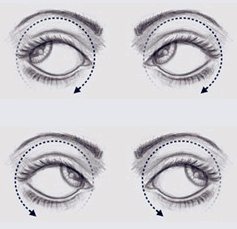












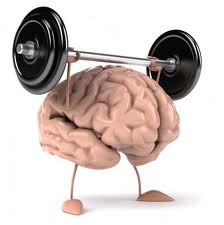








 5. Eventually you start to burn fatty acids instead of glucose for fuel. And a few days into a fast, your body starts to feed on its own proteins. So, yes, your stomach will eat itself
5. Eventually you start to burn fatty acids instead of glucose for fuel. And a few days into a fast, your body starts to feed on its own proteins. So, yes, your stomach will eat itself 12. Studies have traced cravings for high-calorie meals back to caveman days, when hunters and gatherers needed to store energy between unpredictable mealtimes. Now our cravings for fatty and sugary foods, which release chemicals that can trigger mild euphoria, spur obesity and diabetes.
12. Studies have traced cravings for high-calorie meals back to caveman days, when hunters and gatherers needed to store energy between unpredictable mealtimes. Now our cravings for fatty and sugary foods, which release chemicals that can trigger mild euphoria, spur obesity and diabetes. 13. Refined carbs can make you hungrier by interfering with messages the digestive system sends to the brain to signal it’s time to put down the doughnut.
13. Refined carbs can make you hungrier by interfering with messages the digestive system sends to the brain to signal it’s time to put down the doughnut.








 لا تقاطع محدثك
لا تقاطع محدثك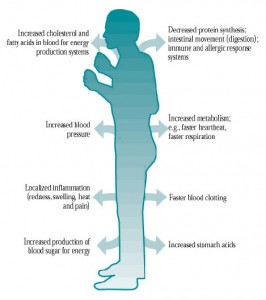 The Body
The Body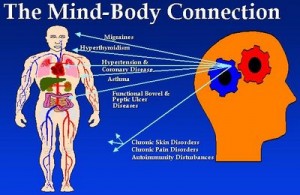 The Pain and Pleasure Response
The Pain and Pleasure Response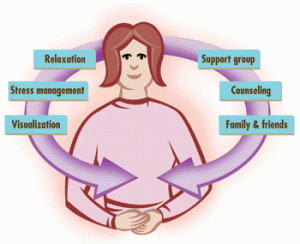 The Mind
The Mind The Spirit
The Spirit Understanding Spiritual Energy Fluctuations
Understanding Spiritual Energy Fluctuations


 Neural Associations
Neural Associations The Highway Analogy
The Highway Analogy The Role of Anchors in Habit Formation
The Role of Anchors in Habit Formation Types of Anchors
Types of Anchors The Anchoring Process
The Anchoring Process Transforming an Unhelpful Habit
Transforming an Unhelpful Habit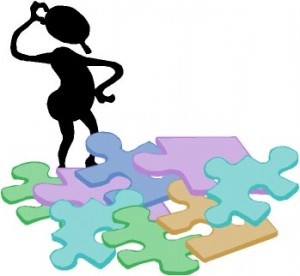 Step Two
Step Two
 Maslow’s Hierarchy of Needs certainly filled a void by exploring:
Maslow’s Hierarchy of Needs certainly filled a void by exploring: The Need for Uncertainty
The Need for Uncertainty The Need for Growth
The Need for Growth Behavior Transformation Strategies
Behavior Transformation Strategies
 There must be a better way? There must be a way to eliminate or at least better manage the stress you experience on a daily basis? And there actually is. Eliminating stress requires that you focus on the five A’s: Avoid, Alter, Adapt, Accept, and Adopt. Let’s have a look at each of these five A’s in a little more detail:
There must be a better way? There must be a way to eliminate or at least better manage the stress you experience on a daily basis? And there actually is. Eliminating stress requires that you focus on the five A’s: Avoid, Alter, Adapt, Accept, and Adopt. Let’s have a look at each of these five A’s in a little more detail: Re-Energize Yourself
Re-Energize Yourself Immediately Adjust Your Physiology
Immediately Adjust Your Physiology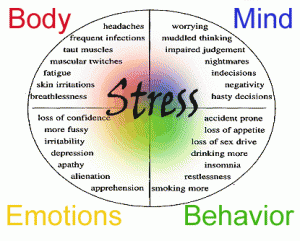 Develop Plan of Action to Manage Stress
Develop Plan of Action to Manage Stress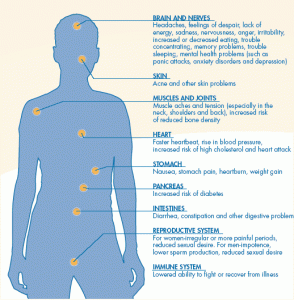 Turn Your Needs into Wants
Turn Your Needs into Wants Manage Your Time More Effectively
Manage Your Time More Effectively Accept What You Cant Control
Accept What You Cant Control Making Better Lifestyle Choices
Making Better Lifestyle Choices

 The Seasons of Transformation
The Seasons of Transformation Seasons Are Temporary
Seasons Are Temporary Self-Reflection Questions
Self-Reflection Questions The Evolution of Summer
The Evolution of Summer Winter Season
Winter Season Spring Season
Spring Season
 Always Plan Your Next Step
Always Plan Your Next Step Build Your Reputation
Build Your Reputation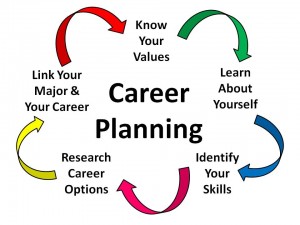 Consider Broadening Your Knowledge Base
Consider Broadening Your Knowledge Base Making Career Change Easy
Making Career Change Easy
 Definition of Critical Thinking
Definition of Critical Thinking Builds Confidence, Knowledge and Understanding
Builds Confidence, Knowledge and Understanding Ability to Identify Patterns and Connections
Ability to Identify Patterns and Connections Has Flexibility of Thought
Has Flexibility of Thought Steps for Effective Critical Thinking
Steps for Effective Critical Thinking
 If you ever start feeling superhuman, wait a day or two – you’re sure to make a mistake, and you’ll probably feel bad about it. Making mistakes is nothing to worry about – it’s proof of your humanity. The time to worry is when you don’t think you’re making mistakes, because you probably are – you just don’t know it yet.
If you ever start feeling superhuman, wait a day or two – you’re sure to make a mistake, and you’ll probably feel bad about it. Making mistakes is nothing to worry about – it’s proof of your humanity. The time to worry is when you don’t think you’re making mistakes, because you probably are – you just don’t know it yet.








